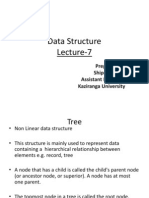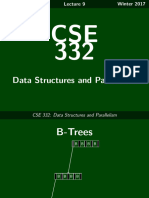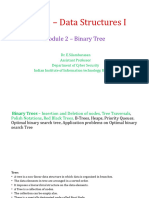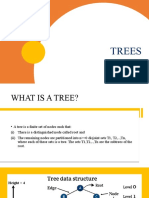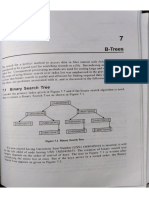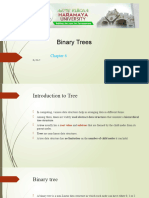0% found this document useful (0 votes)
13 views21 pagesChapter 3 File Organization Trees Structures
The document discusses file organization using tree structures, specifically m-ary search trees and B-Trees, which are more efficient for large and dynamic files compared to traditional index table methods. It explains the structure, search, and insertion algorithms for both m-ary search trees and B-Trees, highlighting their balanced nature and advantages. The conclusion notes the benefits and drawbacks of tree methods in file management.
Uploaded by
miloga4905Copyright
© © All Rights Reserved
We take content rights seriously. If you suspect this is your content, claim it here.
Available Formats
Download as PDF, TXT or read online on Scribd
0% found this document useful (0 votes)
13 views21 pagesChapter 3 File Organization Trees Structures
The document discusses file organization using tree structures, specifically m-ary search trees and B-Trees, which are more efficient for large and dynamic files compared to traditional index table methods. It explains the structure, search, and insertion algorithms for both m-ary search trees and B-Trees, highlighting their balanced nature and advantages. The conclusion notes the benefits and drawbacks of tree methods in file management.
Uploaded by
miloga4905Copyright
© © All Rights Reserved
We take content rights seriously. If you suspect this is your content, claim it here.
Available Formats
Download as PDF, TXT or read online on Scribd
/ 21
